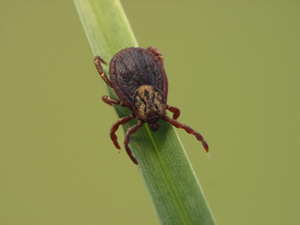
From 2002 to 2014, there was a total of 443 cases of Lyme disease reported in Nova Scotia.
In 2015, there were 245 reported cases of Lyme disease, which was an increase from the 115 cases reported in 2014.
NS had the highest reported incidence of Lyme Dz in people in Canada (16/100,000 people) as of last-published data in 2013, & while dogs contract Lyme from the Adult Tick Deer Tick (Ixodes scapularis), people can contract Lyme from Nymphs & Adults. Therefore, for your families’ well-being, as well as your pets, a Tick Prevention & Lyme Disease Management program forms an integral part of the annual dog & cat assessment at Sunnyview.Vet.
Tick populations are expanding in Nova Scotia and Lyme disease awareness has grown over the years, so an increase in number of cases is expected in 2017.
The primary goals of any Tick Prevention Program would be to reduce the number of Ticks our pets are exposed to – and reduce your families’ exposure as well. However, knowing that tick checks may be challenging for pets with longer fur, & that no preventative is 100% effective – in areas where Tick exposures are likely, vaccination can be used as an additional tick-borne disease management option, based on the possible escalating risk of exposure due to:
a) Where your family lives;
b) Where the pet travels to (cottages, trips, etc.);
c) Sports the owner or pet participate in;
d) and IF ticks are found on a dog currently on a Tick Preventative; Sunnyview recommends Lyme disease Vaccination
Tick removal strategies: The best way to remove a tick from a human or pet is to use a fine pair of tweezers (eyebrow, or thumb forceps), grasping the tick as close to the skin as possible, and then pulling up gently, but firmly. Tick Twisters or Tick Keys also work, but care should be taken to work slowly, with gentle rotation of the device to ensure the mouthparts of the tick are also removed.
The key is to remove the tick as soon as possible to decrease chances of disease transmission. The application of noxious substances to ticks to encourage them to detach is absolutely NOT recommended – When a tick encounters a noxious substance, its natural reaction is to regurgitate its stomach contents, and you are allowing the tick to remain embedded longer, increasing the possibility of disease transmission. This again increases the chance of the pet or person being exposed to tick-borne illness.
If we don’t look for this disease, and the ticks that carry it – it is easy to miss!
Please contact the Sunnyview Team anytime for more information!
